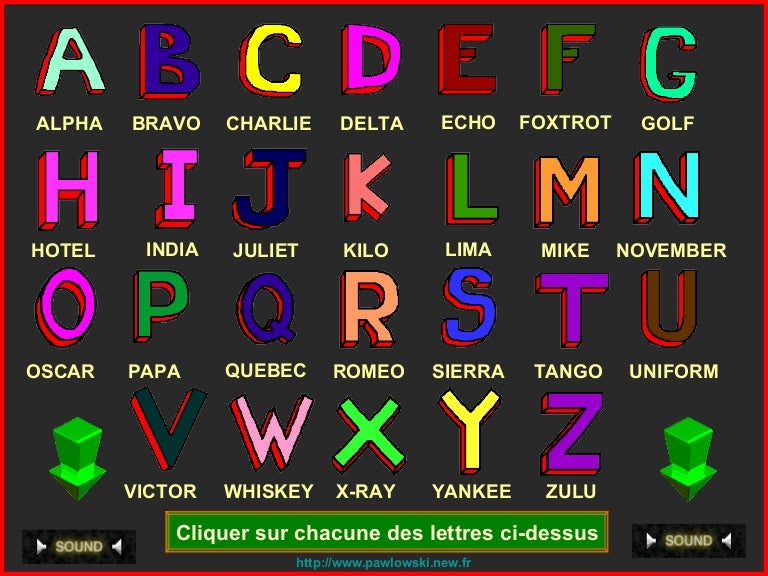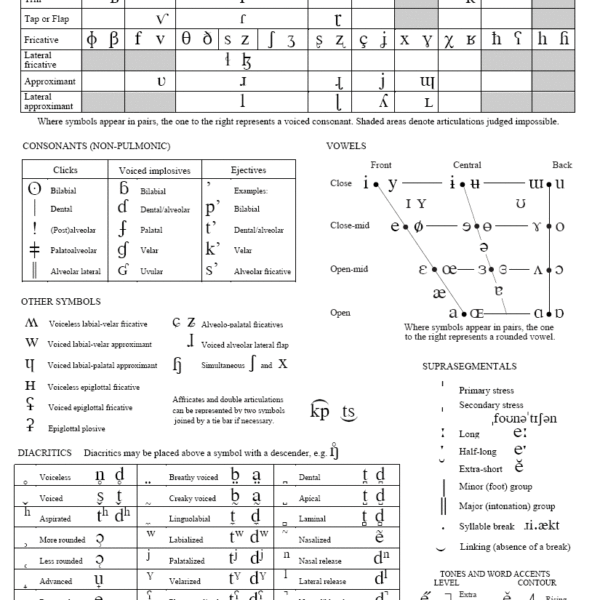

Contact us online or via phone +44 (0) 2. Stress marks: In IPA, // indicates that the primary stressed syllable follows and // indicates the secondary stressed syllable follows, as in newspaper /nuzpe pr/ and information / n frme n/.

#Ipa talking alphabet how to
You can learn English with our expert trainers in our London centre at 15 Holland Park Gardens, in the Royal Borough of Kensington and Chelsea, or you can choose to study English online in groups or in individual classes. This chart will tell you how to read the pronunciation symbols. We also offer bespoke business solutions for staff training and assessment.
#Ipa talking alphabet professional
Courses include General English, Individual English training, Legal English, Business and Professional English, IELTS preparation and Academic English. Our practical, individualised approach enables our clients to learn effectively and make rapid progress. The vowels are a little more complicated, but think about what would make sense for Europeans: /i/ is the vowel in beat, and we have a special character for the sound in bid (its /bd/). So most of the symbols are exactly what you would expect. It is the joint #1 English language school in the UK according to the British Council inspections, the highest rated English language school in the world on Trustpilot, and the best value for money school according The English Language Gazette. The IPA was designed to be intuitive, and useful. The London School of English has over 100 years of history teaching English and communication skills to adult learners. This is one way how you can improve English pronunciation.ĭownload examples of IPA sounds (PDF) International Phonetic Alphabet Sounds In Everyday Speech Short Vowels IPA Symbol You can practice various vowel and consonant sounds by pronouncing the words. Here are examples of IPA use in common English words. well give you some advice on using IPA to help you learn English more efficiently and speak better. We also run online English courses in virtual groups, and immersion courses in London. IPA stands for international phonetic alphabet. International Phonetic Alphabet (IPA) is an alphabet-based system of phonetic notation, or visual representation of speech sounds. Even though most users will not have access to the IPA Kiel font, the Association recommends this version of the chart as an ideal. This helps in improving English pronunciation and feeling more confident speaking in English, whether you learn English on you own or with a specialist teacher in an individual English Accent Training class. The Rising-falling tone letter is IPA LS Uni E9B3, a non-Unicode mapping the 2005 chart uses a combination of a Minor (foot) group and a circumflex.

How to refer to this resource: Lawson, E., Stuart-Smith, J., Scobbie, J. The consonant IPA symbols /m/, /n/ and // are all called nasal sounds, because when we make them the air passes through our nose, not out of the mouth. By using IPA you can know exactly how to pronounce a certain word in English. The International Phonetic Alphabet aka IPA is a special range of letters or symbols that are based on phonetics. Charts reprinted with permission from The International Phonetic Association. do you think that's why a lot of learners have difficulty pronouncing English?, the fact of not studying phonology.The International Phonetic Alphabet (IPA) is a system where each symbol is associated with a particular English sound. Answer the questions in the end to test your understanding. Read the following explanation, and watch the videos. Whatever, how common is the knowledge of the IPA among Anglophones? And. The International Phonetic Alphabet, or IPA in short, will help you learn how to pronounce correctly each and every word in English But first, you need to learn what it is, and how to use it. But I abhor that, it's so crude, likewise in English with its pruh-NUN-see-AY-shuhn ree-SPEL-ing, although the latter is somewhat useful because it is to work for English words only. The IPA (International Phonetic Alphabet) is a sound alphabet that gives you a symbol for each type of sound found in Japanese and therefore provides the foundation to understand how to pronounce words in Japanese properly. For example, " jélzi" instead of /ˈhɛl.θi/ for healthy. Instead, sometimes to represent the pronunciation of words, they usually just put in quotation marks (or parenthesis, etc.) words created using the Spanish alphabet and its respective phonemes. Many don't even know that day and they aren't homophones. That is why I think that the majority of Hispanophones find it difficult to pronounce English: they don't even study some phonology. In Hispanic America, where I'm from, practically nobody even knows, at least, that an international phonetic alphabet exists I've not had some teacher who even taught me the fricking schwə.


 0 kommentar(er)
0 kommentar(er)
